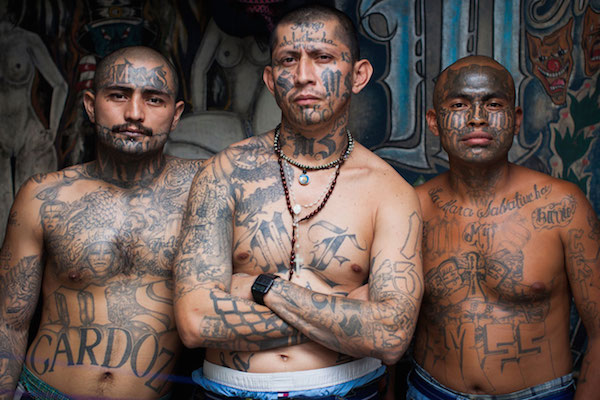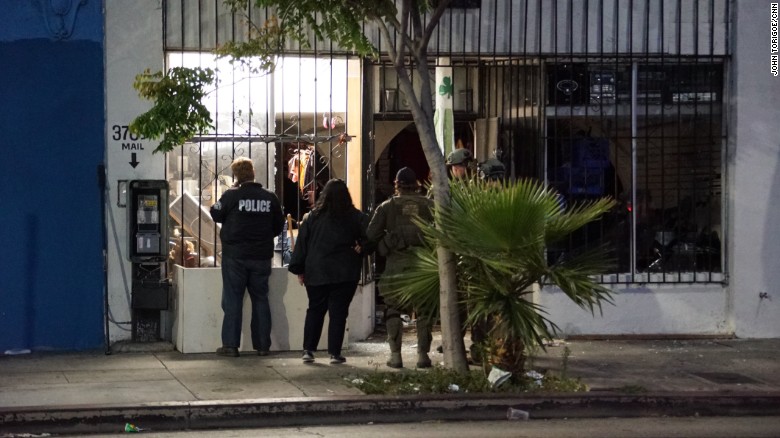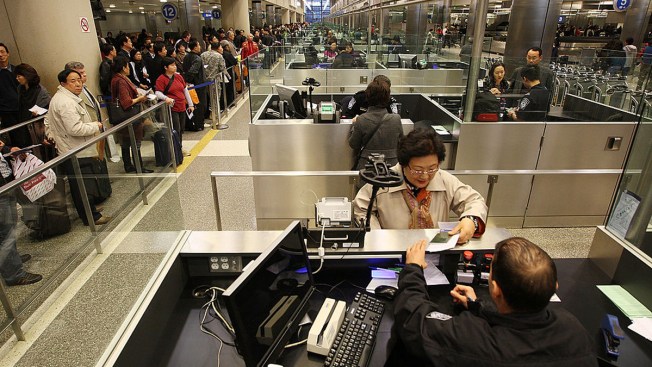Primer: Body found in Queens park identified as teen member of MS-13 gang; victim was stabbed 34 times
The decomposed body of a teen stabbed 34 times and dumped in a Queens park was identified as a member of the ruthless MS-13 street gang, police sources said Tuesday.
Fingerprints from prior arrests and a distinctive tattoo across the victim’s chest helped cops come up with a name for the butchered 16-year-old, according to sources.
“He seemed like a good kid, alright to me,” said a Queens neighbor of the boy’s family. “They were a nice family … It’s sad to hear. That gang is pretty brutal.”
The family was tossed from their home about two weeks ago for non-payment of rent, the neighbors said. A one-page eviction notice was stuck to the front door, and there was a spray-painted “MS13” on a nearby concrete and brick pillar.
The youth was discovered by a bird watcher in Alley Pond Park on Sunday afternoon, officials said. The body had a half-dozen stab wounds in the chest — and 28 more in the back.
The city Medical Examiner ruled his death a homicide and determined that he died about a week ago.
The MS-13 gang made headlines recently for a series of Long Island killings, including the machete murders of two teenage girls last year and the slaughter of four youths just last month. More here from NYDailyNews.
MS-13 extorting businesses in DC suburb: Police chief
Examiner: One of the most infamous gangs in the world is extorting Latino-owned businesses in a county on the outskirts of Washington D.C., a local law enforcement official warned federal lawmakers Wednesday.
Members of MS-13, a transnational gang based in El Salvador, have long demanded payments from illegal businesses that otherwise faced the threat of violence. A sheriff in Montgomery County, Md., believes they’re expanding the list of extortion targets to legitimate businesses.
“We have heard from community members that the gangs, which historically extorted money solely from illicit businesses such as ‘bordellos’ and unlicensed ‘cantinas,’ are now collecting ‘rent’ from legitimate Latino business owners and residents in certain apartment complexes,” Thomas Manger, the county’s chief of police, told the Senate Homeland Security and Government Affairs Committee. “In some instances, if the victims of this extortion refuse to pay the fee demanded by the gang, the gang members return with detailed information on the intended victims’ family members still living in Central America.”
The Trump administration has stepped up efforts to deport the gang members, to the chagrin of El Salvadoran leaders. “This clearly affects El Salvador. We already have a climate of violence in the country that we are combating,” Hector Antonio Rodriguez, the director of the country’s immigration agency, told the Washington Post. “If gang members return, of course this worries us.”
Violence in El Salvador contributes to the influx of Central Americans on the southern border, a human crisis that provides profit for gangs and taxes the border security capabilities of the United States. That’s why lawmakers such as Sen. James Lankford are interested in foreign aid to countries such as El Salvador.
“How we’re spending money in our foreign aid, and how we need to be able to target this, specifically dealing with violence in those areas, has an exact connection to what’s happening here,” the Oklahoma Republican said following an exchange with Manger.
In the meantime, threats of violence against Central American family members have also helped MS-13 gather new recruits in the United States, according to Manger. “The victims here in the United States know that the threat of violence to their extended family in their native countries is a true possibility and the perpetrators are out of the reach of U.S. law enforcement,” Manger said.
*** 
Were MS-13 gang members released into US communities? Senator demands answers
At least 16 self-proclaimed MS-13 gang members were transferred out of federal custody and into community placement centers across the country during the border surge in unaccompanied children from Central America in 2014, according to a new letter from the Chairman of the Committee on Homeland Security and Governmental Affairs.
It was unclear what happened to the members of Mara Salvatrucha, one of the most brutal transnational gangs in the world, and that’s why Senator Ron Johnson, R-Wis., wrote the Office of Refugee Resettlement on Tuesday demanding answers.
In 2014, the Obama Administration declared a humanitarian crisis after tens of thousands of immigrants flooded across the United States border.The dramatic increase in immigrants from El Salvador, Guatemala and Honduras overwhelmed border authorities at the time.
Fox News has now learned that more than a dozen teenage gang members were captured during the surge. According to Johnson’s letter and documents obtained by Fox News, the gang members “freely admitted” that they were “active MS-13 gang members” and marked bathrooms inside a placement center in Nogales, Arizona with MS-13 associated graffiti.
One teenage gang member stated he “was a drug dealer” and “would continue to do the same in the United States with his family.” Another admitted he was a member of the Surenos gang and had been “involved in multiple robberies, assaults and drug dealing” since he was 15 years old.
“These documents appear to show that the federal government knowingly moved self-identified gang members from Nogales, Arizona to placement centers in communities across the country. As you know, it is common for UACs (unaccompanied children) to be released from their placement center while awaiting a court date. It is unclear from these July 2014 documents whether any of these self-identified UAC gang members were released,” Johnson wrote in his letter to the Office of Refugee Resettlement.
Johnson is now asking for a complete accounting of all UACs captured at the border who have self-identified as gang members since 2010.
He also wants to know if any of the gang members were released into communities in Virginia, Washington, Texas, New York and Oklahoma. The questions come as the Committee on Homeland Security and Governmental Affairs holds hearings this week on the “The Rise of MS-13 and Other Transnational Criminal Organizations”.
Fox News reached out to Customs and Border Protection and the Office of Refugee Resettlement for a response to Johnson’s letter. So far, they have not responded.


 NY Daily News
NY Daily News
 NBCBoston
NBCBoston
